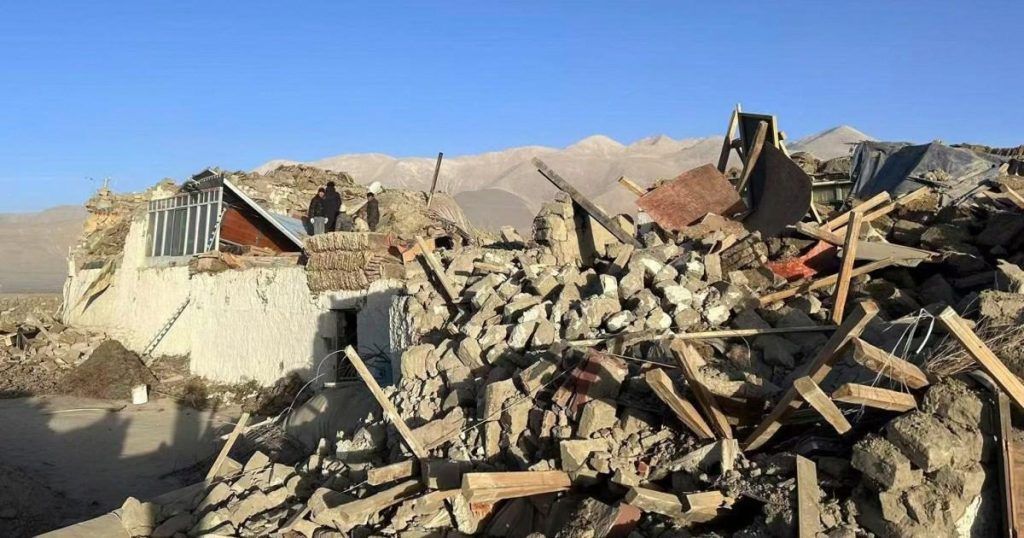A Devastating Earthquake Strikes Tibet, Claiming Lives and Leaving Destruction
A powerful 7.1 magnitude earthquake struck the mountainous region of Tibet near the Nepal border, resulting in significant loss of life and widespread damage. The epicenter, located approximately 50 miles northeast of Mount Everest, unleashed its force at a depth of about six miles, sending tremors reverberating through neighboring Nepal, Bhutan, and India. The initial death toll of 53 rapidly climbed to at least 126, with over 188 injured, as search and rescue operations continued amidst the rubble. The rising casualty figures underscore the tragic impact of this natural disaster.
The earthquake’s destructive power left a trail of devastation in its wake. CCTV footage captured the grim reality of rescue workers navigating piles of debris that once were homes in a heavily damaged village. Shattered remnants of buildings littered the streets, crushing vehicles and obstructing pathways. State media reported extensive damage to approximately 1,000 houses. The affected area, home to an estimated 6,900 people within a 12-mile radius of the epicenter, encompasses three townships and 27 villages. The earthquake’s impact extended to Tingri, where villages experienced intense shaking, followed by a series of aftershocks. Video footage from the town of Lhatse revealed crumbled shop fronts and debris spilling onto the roads, further illustrating the widespread destruction.
This earthquake underscores the vulnerability of the region to seismic activity. The southwestern region of China, along with Nepal and northern India, lies within a seismically active zone where the Indian and Eurasian tectonic plates collide. This geological phenomenon has resulted in numerous earthquakes throughout history, inflicting significant damage and loss of life. The 2015 earthquake near Kathmandu, measuring 7.8 on the Richter scale, serves as a stark reminder of the devastating consequences of such events. That earthquake claimed the lives of 9,000 people in Nepal, including 18 individuals at Mount Everest base camp who were tragically killed by an avalanche triggered by the tremors.
The earthquake’s impact extended beyond the immediate epicenter. Tremors were felt in Kathmandu, Nepal’s capital, approximately 250 miles away, prompting residents to flee their homes in fear. The northern Indian state of Bihar, which shares a border with Nepal, also experienced the earthquake’s tremors, as did Thimphu, the capital of Bhutan. While no immediate reports of damage or casualties were received from these areas, the widespread reach of the earthquake highlights the interconnectedness of the region and the potential for far-reaching consequences.
In response to the disaster, Chinese President Xi Jinping called for comprehensive search and rescue efforts to minimize casualties, provide adequate resettlement for affected individuals, and ensure their safety and warmth during the approaching winter. Local government officials worked diligently to assess the extent of the damage and check for casualties in nearby towns, coordinating their efforts to provide assistance and support to those impacted by the earthquake. The magnitude of the disaster necessitates a coordinated response to address the immediate needs of the affected population and to begin the long process of recovery and rebuilding.
This latest earthquake adds to a grim history of seismic events in the region. China, particularly the Tibetan Plateau and its fringes, experiences frequent earthquakes due to the ongoing collision of the Indian and Eurasian tectonic plates. The resulting uplifts can be so powerful that they can alter the heights of Himalayan peaks. The 2008 earthquake in Sichuan province, measuring 7.9, claimed the lives of nearly 90,000 people, highlighting the devastating potential of these natural disasters. The collapse of schools and other buildings during that earthquake led to a prolonged reconstruction effort focused on using more earthquake-resistant materials. Other notable earthquakes have struck Yunnan, Qinghai, and Gansu provinces, underscoring the ever-present seismic threat in this region. This most recent earthquake serves as a stark reminder of the importance of preparedness and the ongoing need for resilient infrastructure in earthquake-prone areas.


